
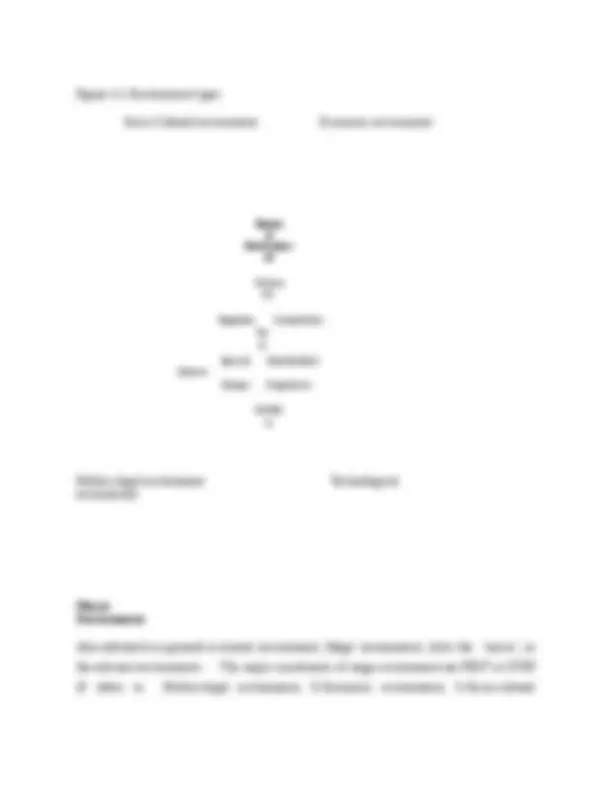
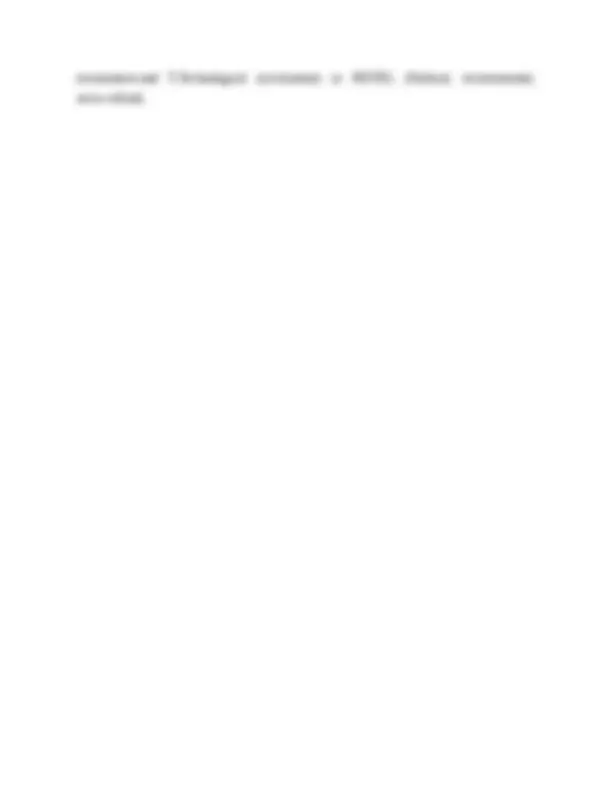
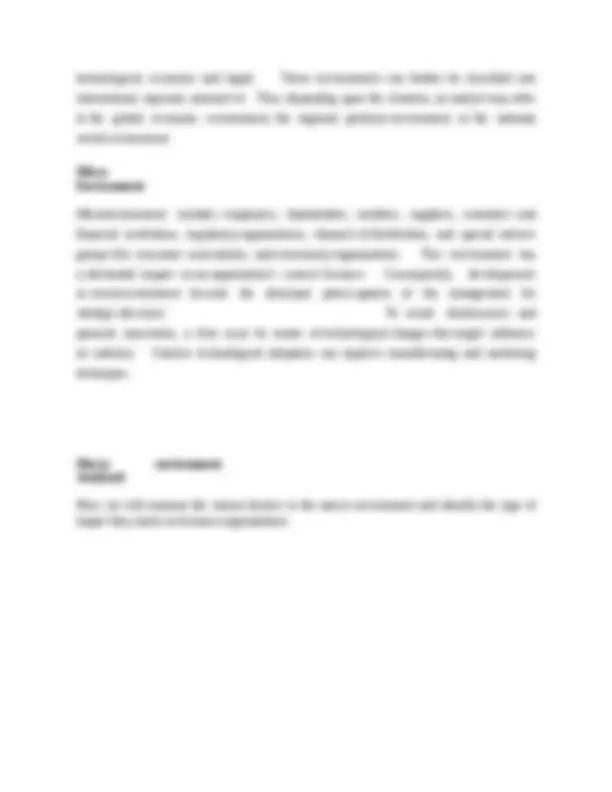
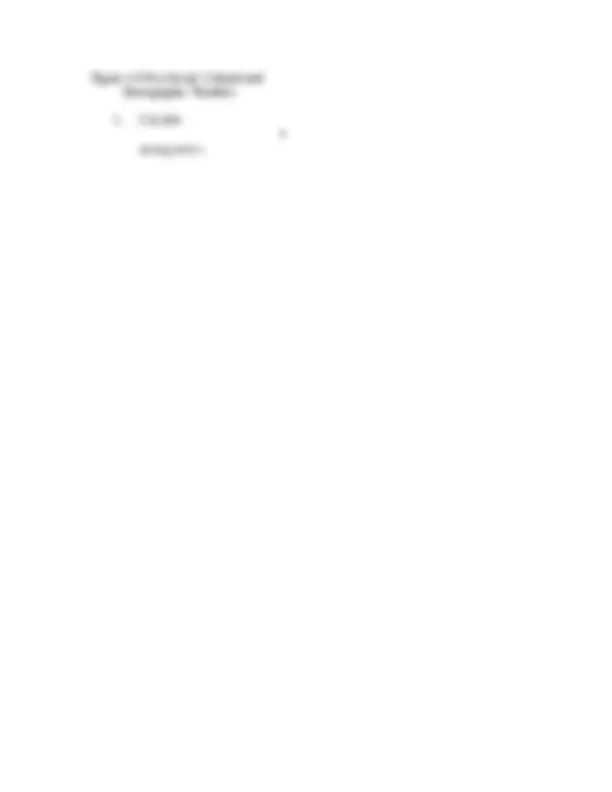
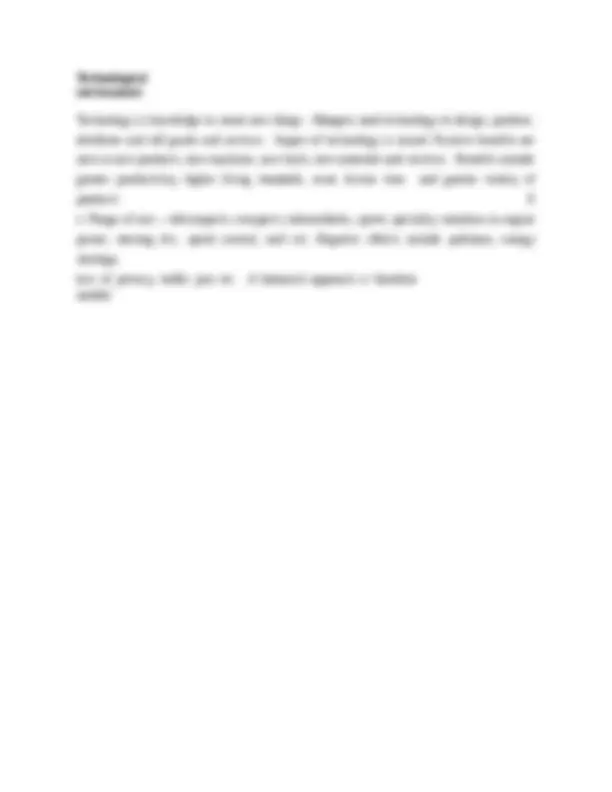
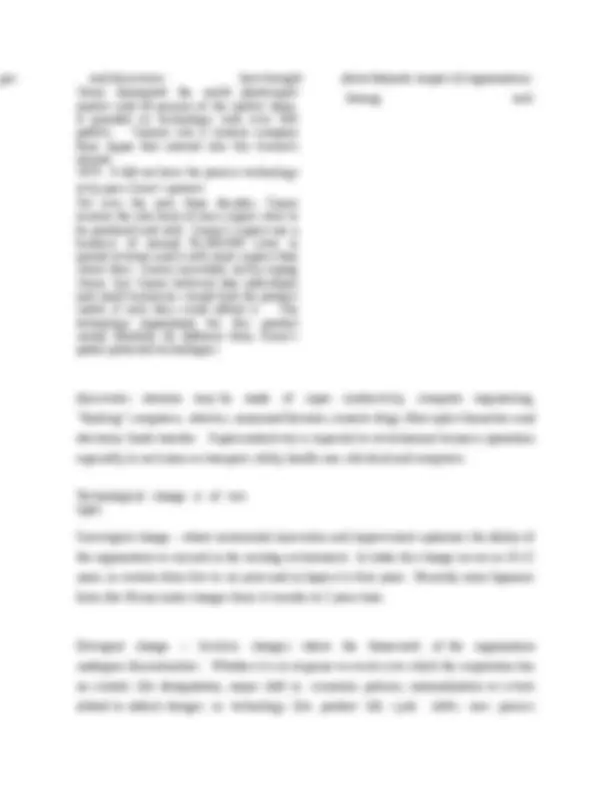
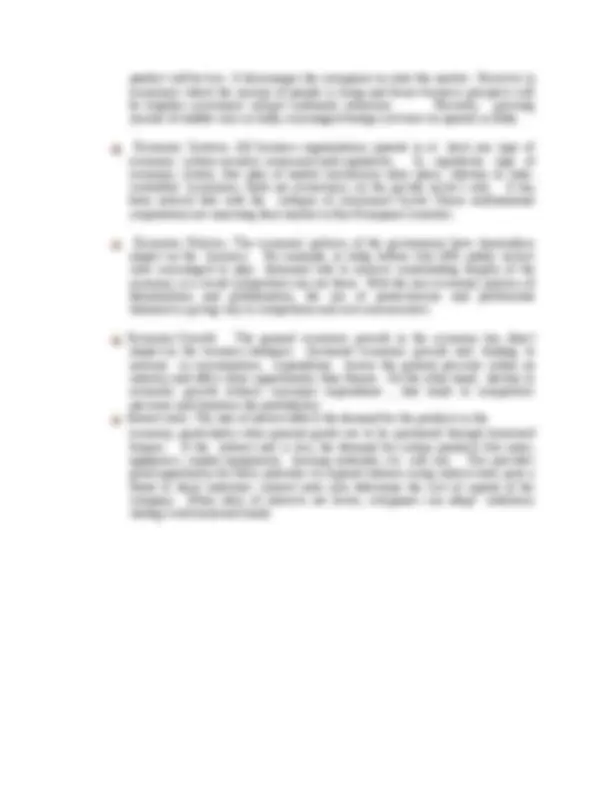
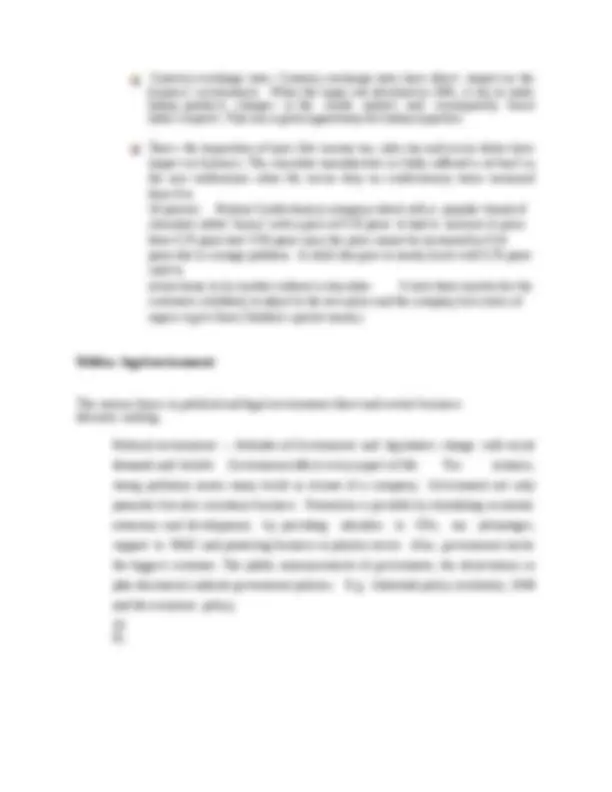
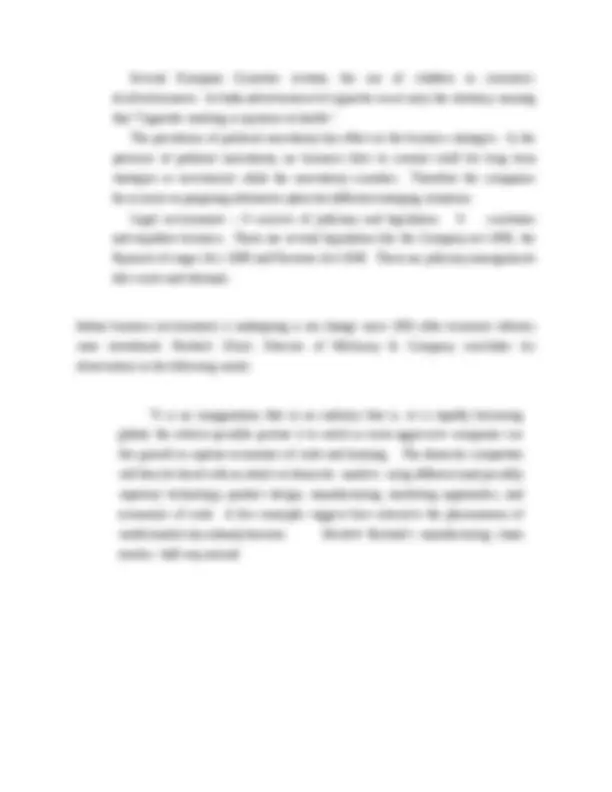
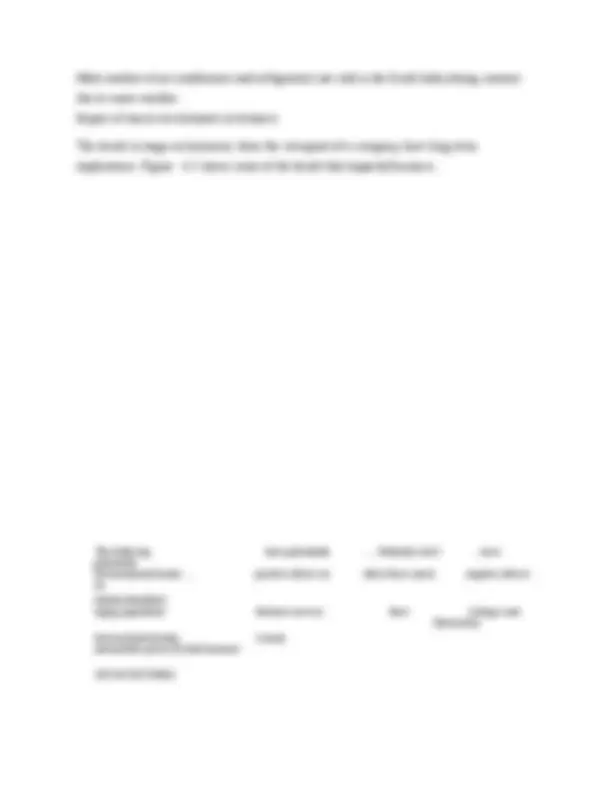
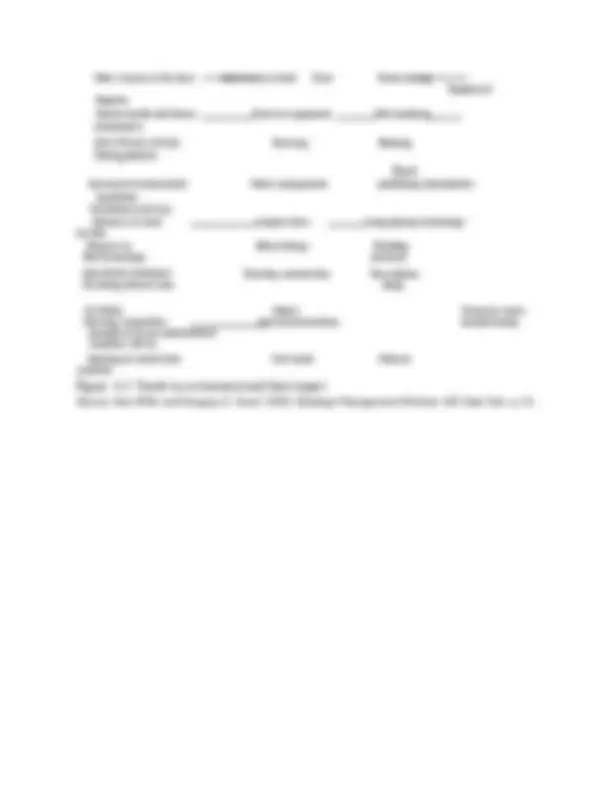


Study with the several resources on Docsity

Earn points by helping other students or get them with a premium plan


Prepare for your exams
Study with the several resources on Docsity

Earn points to download
Earn points by helping other students or get them with a premium plan
Community
Ask the community for help and clear up your study doubts
Discover the best universities in your country according to Docsity users
Free resources
Download our free guides on studying techniques, anxiety management strategies, and thesis advice from Docsity tutors
Business Organizations, Turbulent Environment, Aggregate, Internal Environment, Mega Environment, Pestel, Political, T-Technological Environment, Socio-Cultural, Technological, Marketing Techniques, Burgeoning Middle Class, Subcompacts, Intermediates, Sports, Specialty, Variations, Revolutionize Business, Nationalization, Government Fiscal, Capitalistic, Profitability, Constrains Business
Typology: Study notes
1 / 19

This page cannot be seen from the preview
Don't miss anything!












Introducti on
Business organizations operate in a turbulent environment and the changes in the environment
impacts business. The changes that take place in the internal and external environments
impinge on the policy decisions of business enterprises and cast profound influence in their
working and efficiency. The external environmental factors are in a continual flux creating
new opportunities and new threats to the company. They are always capable of producing
major shocks, which Peter Drucker has called as, “an Age of Discontinuity.” In order to
survive and succeed a company must consider and understand the environment and make
policies to adopt to or alter the environment.
Concept of environment
Prof. Keith Davis defines business environment as, “the aggregate of all conditions events and
influences that surround and affect it.” These surroundings are constantly changing
and
uncertain.
Unilever recently sued Proctor & Gamble (P&G) over that company’s corporate espionage activities to obtain the secrets of its Unilever hair-care business. After spending $3 million to establish a team to find out about competitors in the domestic hair care industry, P&G allegedly took roughly eighty documents from garbage bins outside Unilever’ s hair-care brands such as ThermaSilk, Suave, Salon Selective, and Finesse.
Similarly, Oracle Corp. recently admitted that detectives it hired paid janitors to go through Microsoft Corp.’s garbage, looking for evidence to sue in court.
Taxonomy of a firm’s environment
The total environment can be classified into two broad categories F 0 D 8 Internal environment F 0 D 8 External environment
The internal environment includes the goals and value system, the hierarchical authority
structure, the technological equipment and processes, the social groups and teams, the
management groups, organizational climate and culture,etc.
The external environment can be classified into two
segments. F 0 4 6 F 0 Macro environment or Mega environment, or 4 6 Micro environment or task environment.
environment and T-Technological environment) or PESTEL (Political, environmental,
socio-cultural,
technological, economic and legal). These environments can further be classified into
international, regional, national etc. Thus, depending upon the situation, an analyst may refer
to the global economic environment, the regional political environment or the national
social environment.
Micro Environment
Microenvironment includes employees, shareholders, creditors, suppliers, customers and
financial institutions, regulatory organizations, channels of distribution, and special interest
groups like consumer associations, and community organizations. This environment has
a substantial impact on an organization’s current business. Consequently, developments
in microenvironment become the dominant preoccupation of the management for
strategic decisions. To avoid obsolescence and
promote innovation, a firm must be aware of technological changes that might influence
its industry. Creative technological adoptions can improve manufacturing and marketing
techniques.
Macro environment Analyzed
Now, we will examine the various factors in the macro environment and identify the type of
impact they make on business organizations.
McDonalds, the world’s fastest growing fast
food chains extended Indian market with beef and pork as ingredients in its pizzas and burgers. Since Hindus are religiously against cow slaughter and do not consume beef and Muslims hate pork these was great opposition in Bombay and the local shiv sena activities broke down McDonald’s fast food center at Mumbai. Today the company relaunched its products with ‘no beef and no pork’ sign boards and even gave wide publicity that animal fat is not used in its restaurants. Further to Indianise its products new versions for Indians like Mc. Imli (with tamarind), Mc spic (with Indian spices) etc are introduced exclusively for Indian market.
e c u li a r u s a g e f o r
ms include:
Vicks Vaporub is used as a mosquito
repellent in some tropical countries.
Hair dyes are used for marking animals
and washing machines for making Lassi in
some rural areas of Punjab.
Figure 4-3 Key Social, Cultural and
Demographic Variables
Xerox dominated the world photocopier market with 93 percent of the market share. It guarded its technology with over 500 patents. Cannon was a camera company from Japan that entered into this business around
to by-pass Xerox’s patents. Yet over the next three decades, Canon rewrote the rule book of how copiers were to be produced and sold. Canon’s copiers are a business of around Rs.300,000 crore in annual revenues and it sells more copiers than Xerox does. Canon succeeded, not by coping Xerox, but Canon believed that individuals and small businesses would find the product useful if only they could afford it. The technology appropriate for this product would therefore be different from Xerox’s patent protected technologies. ges and discoveries have brought about dramatic impact of organizations. Among such discoveries mention may be made of super conductivity, computer engineering, “thinking” computers, robotics, unmanned factories, miracle drugs, fiber optics biometrics and electronic funds transfer. Superconductivity is expected to revolutionize business operations especially in such areas as transport, utility, health care, electrical and computers. Technological change is of two types Convergent change - where incremental innovation and improvement optimizes the ability of the organization to succeed in the existing environment. In India this change occurs in 10- years, in western firms five to six years and in Japan it is four years. Presently some Japanese firms like Nissan make changes from 14 months to 2 years time. Divergent change – Involves changes where the framework of the organization undergoes discontinuities. Whether it is in response to events over which the corporation has no control, like deregulation, major shift in economic policies, nationalization or events related to radical changes in technology like product life cycle shifts, new process
technologies, radical innovations, etc., these changes involve organizational re-formation or
transformation. Example includes replacement of Swiss mechanical watches with high
innovation by simple battery operated electronic watches. Some of the winners and losers of
technological changes are given in the following Table 4-1.
Table 4-1: Disruptive Technologies : Winners and Losers
Dominant Firm Product^ Disruptive Technology
Winning Challengers GM and Ford Small cars Japanese quality & manufacturing expertise
Totyoto and Honda
Gillette Razor blades Stainless steel technology
Wilkensen
Gillette Cheap razors Plastic technology
Bic
Parker Fountain pens
Ball point pen technology
Timex
product will be low. It discourages the companies to enter the market. However in economies where the income of people is rising and hence business prospects will be brighter; investment will get automatic attraction. Recently growing income of middle class in India, encouraged foreign investors to operate in India.
Economic Systems. All business organizations operate in at least one type of economic system-socialist, communist and capitalistic. In capitalistic type of economic system, free play of market mechanism takes place, whereas in state- controlled economies, there are restrictions, on the private sector’s role. It has been noticed that with the collapse of communist Soviet Union multinational corporations are searching their market in East European Countries.
Economic Policies. The economic policies of the government have tremendous impact on the business. For example, in India, before July 1991 public sectors were encouraged to play dominant role to achieve commanding heights of the economy; as a result competition was not there. With the new economic policies of liberalization and globalization, the era of protectionism and preferential treatment is giving way to competition and cost-consciousness.
Economic Growth The general economic growth in the economy has direct impact on the business strategies. Increased economic growth rate, leading to increase in consumptions, expenditure, lowers the general pressure within an industry and offers more opportunities than threats. On the other hand, decline in economic growth reduces consumer expenditure , that leads to competitive pressures and threatens the profitability. Interest rates. The rate of interest affects the demand for the products in the
economy, particularly when general goods are to be purchased through borrowed finance. If the interest rate is low, the demand for certain products like autos, appliances, capital equipments, housing materials, etc. will rise. This provides good opportunity for these industries to expand whereas rising interest rates pose a threat to these industries. Interest rates also determine the cost of capital of the company. When rates of interests are lower, companies can adopt ambitious strategy with borrowed funds.
Currency exchange rates. Currency exchange rates have direct impact on the business environment. When the rupee was devalued in 1991, it was to make Indian products cheaper in the world market and consequently boost India’s exports. That was a great opportunity for Indian exporters.
Taxes- the imposition of taxes like income tax, sales tax and excise duties have impact on business. The chocolate manufactures in India suffered a set back in the new millennium when the excise duty on confectionery items increased from 8 to 16 percent. Nutrine Confectionery company which sells a popular brand of chocolate called ‘Aasey’ with a price of 0.25 paise to had to increase its price from 0.25 paise had 0.50 paise since the price cannot be increased by 0. paise due to coinage problem. A child who goes to nearly kiosk with 0.25 paise used to return home to his mother without a chocolate. It took three months for the customers (children) to adjust to the new price and the company lost crores of rupees it gets from Children’s pocket money.
Politico- legal environment
The various forces in political and legal environment direct and restrict business decision- making.
Political environment – Attitudes of Government and legislators change with social
demands and beliefs. Government affects every aspect of life. For instance,
strong pollution norms many result in closure of a company. Government not only
promotes but also constrains business. Promotion is possible by stimulating economic
extension and development, by providing subsidies to SSIs, tax advantages,
support to R&D and protecting business in priority sector. Also, government can be
the biggest customer. The public announcements of government, the observations in
plan documents indicate government policies. E.g.: Industrial policy resolution, 1948
and the economic policy,
19
the globe, from well paid, skilled engineers in California to low range assembly in
Malaysia. General Electric has survived as a manufacturer of inexpensive audio
products by centralizing its world production in Singapore.
A number of measures have been announced to facilitate private entry into areas of
infrastructure which were formerly the prerogative of the public sector with a view to freeing
scarce public resources for social sector. These include natural resource sectors, and
non-tradable infrastructure services such as electricity, internal transport telecommunications.
Natural Environment: Geographical and ecological factors, such as natural
resources endowments, weather and climatic conditions, topographical factors, location
aspects in the global context, port facilities etc., are all relevant to business. Differences
in geographical conditions between markets may sometimes call for changes in the marketing
mix. Geographical and ecological factors also influence the location of certain industries.
Natural Resource availability
For example, industries with high material index tend to be located near the raw material
sources. Climate and weather conditions affect the location certain industries like the cotton
textile industry in Mumbai, Ahmedabad and Coimbatore. Topographical factors They
may affect the demand pattern.
For example, in hilly areas with a difficult terrain, jeeps may be in greater demand than cars.
Ports - Air ports and seaports offer an advantage in transport. Many commercial cities are
those, which have this port advantage.
In India business has flourished near ports. For example, Visakhapatnam in Andhra Pradesh,
which has a natural harbour, has many major industries like BHPV, steel plant, Hindustan
Shipyard, Coromandel Fertilizers etc., located there due to the advantage of port.
Green concerns Government is becoming increasingly concerned about protecting
the environment. Use of plastic bags is banned in several states and Union Territories like
Andhra Pradesh and Sikkim. Government is investing on water harvesting schemes to
conserve ground and natural water resources
Cliamtic conditions Variations in climatic conditions cause differences in demand for goods.
More women in the force Convenience foods Farm Home baking Equipment Supplies Greater health and fitness Exercise equipment Mest products awareness POLITICAL/LEGAL Trucking Banking Deregulation Book Increased environmental Waste management publishing Automobiles legislation TECHNOLOGICAL Advances in laser compact discs Long playing technology records Progress in Ethical drugs Building Bio-technology materials MACROECONOMIC Housing construction Prescription Declining interest rates drugs
GLOBAL Global Domestic stores Growing competitive telecommunications manufacturing strength of newly industrialized Countries (NICs) Opening of eastern bloc Fast foods Defense countries , ,,
Figure 4-2: Trends in environment and their impact
Source: Alex Miller and Geogory G. Dess( 1996), Strategic Management McGraw -Hill, New York, p. 61.